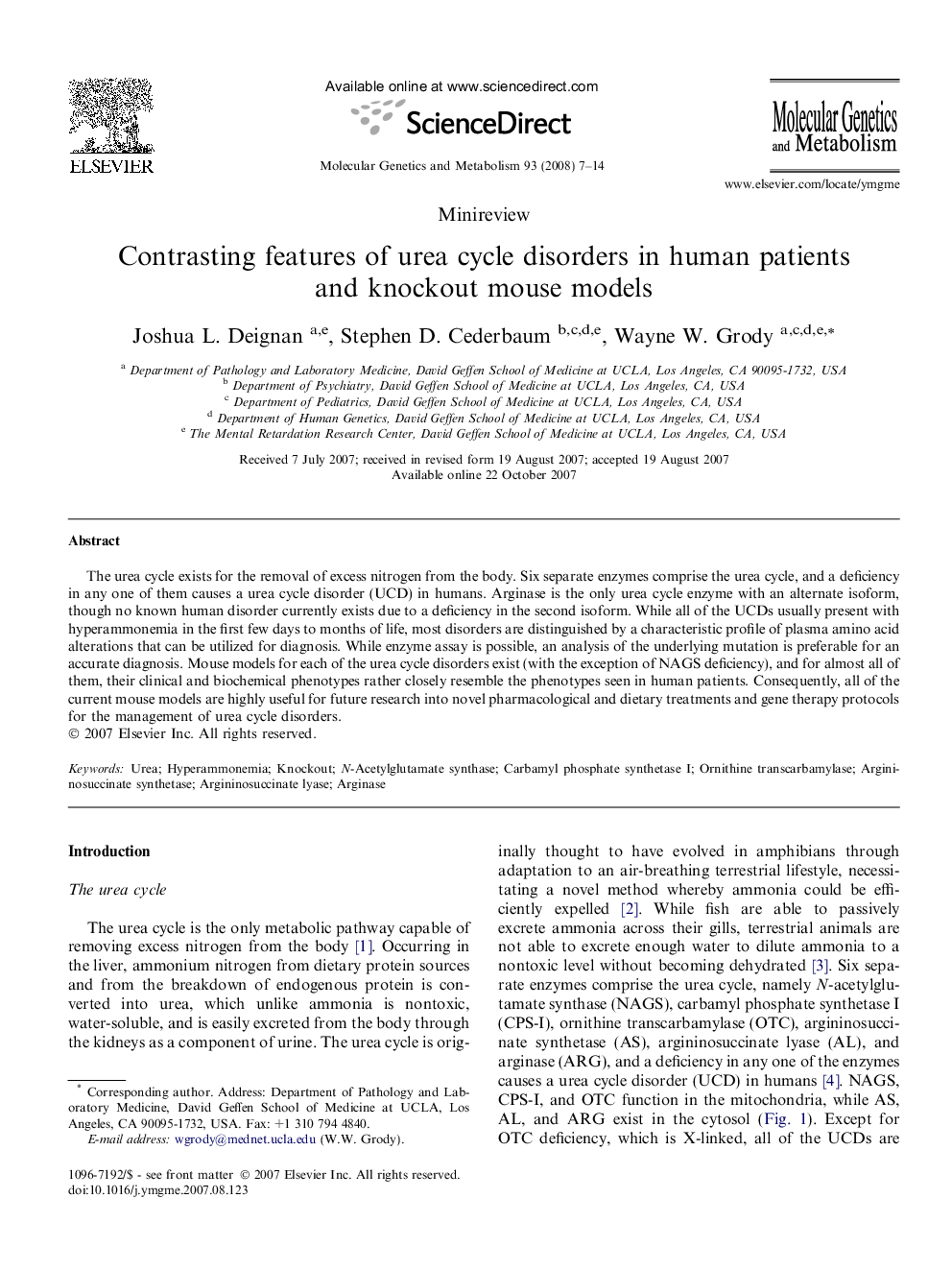| Article ID | Journal | Published Year | Pages | File Type |
|---|---|---|---|---|
| 2000024 | Molecular Genetics and Metabolism | 2008 | 8 Pages |
The urea cycle exists for the removal of excess nitrogen from the body. Six separate enzymes comprise the urea cycle, and a deficiency in any one of them causes a urea cycle disorder (UCD) in humans. Arginase is the only urea cycle enzyme with an alternate isoform, though no known human disorder currently exists due to a deficiency in the second isoform. While all of the UCDs usually present with hyperammonemia in the first few days to months of life, most disorders are distinguished by a characteristic profile of plasma amino acid alterations that can be utilized for diagnosis. While enzyme assay is possible, an analysis of the underlying mutation is preferable for an accurate diagnosis. Mouse models for each of the urea cycle disorders exist (with the exception of NAGS deficiency), and for almost all of them, their clinical and biochemical phenotypes rather closely resemble the phenotypes seen in human patients. Consequently, all of the current mouse models are highly useful for future research into novel pharmacological and dietary treatments and gene therapy protocols for the management of urea cycle disorders.
